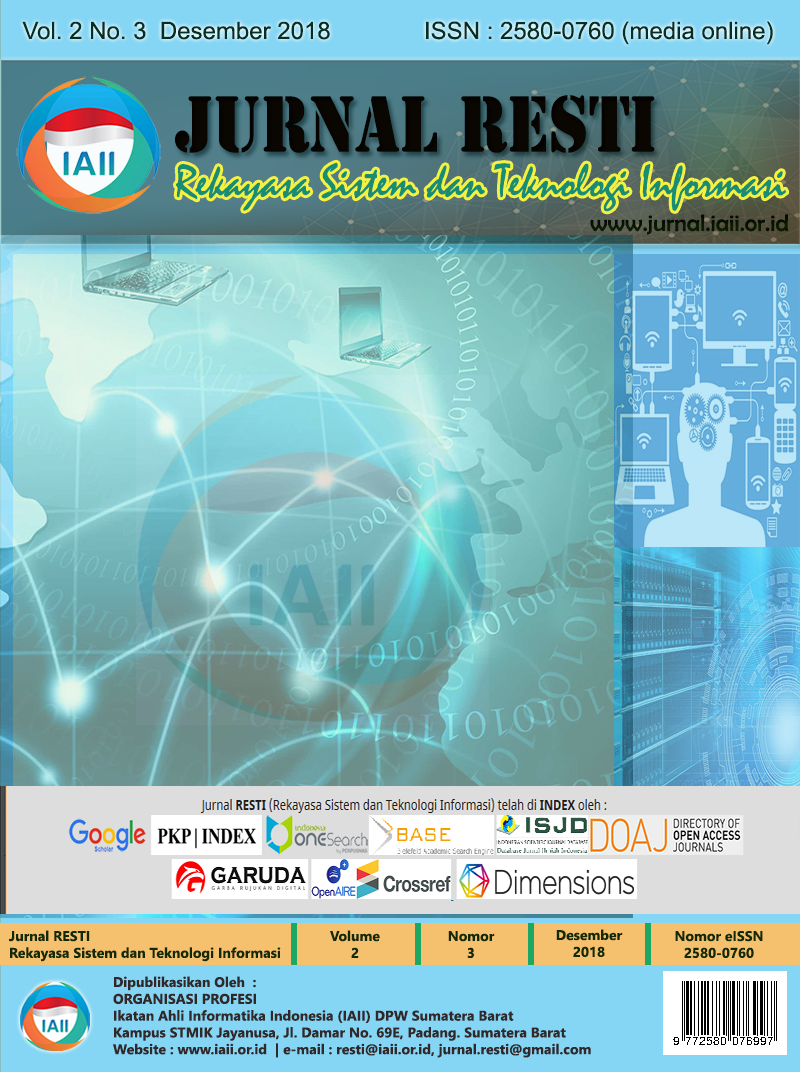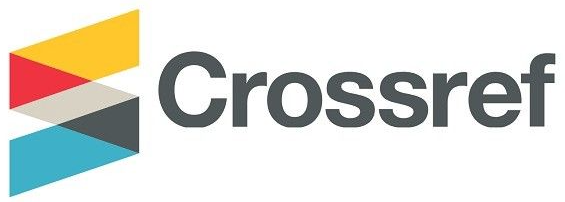Faktor-Faktor Yang Mempengaruhi Kesuksesan E-Commerce UKM Kain Tradisional Palembang
Abstract
This study empirically examines the factors that influence the success of e-commerce in traditional cloth of Palembang SMEs using the DeLone & McLean approach. The variables used are system quality, service quality, information quality, and use. The problem in this study is, there are still many SMEs in the traditional cloth of Palembang that have not used e-commerce technology in their business processes, so it is necessary to investigate what factors influence the use of e-commerce technology in the traditional cloth of Palembang SMEs. The samples taken are 35 traditional Palembang cloth SMEs that have used e-commerce in their business processes. This research was conducted with exploratory and empirical studies. In the exploratory study conducted by identifying the success factors of SI e-commerce based on the DeLone & McLean model. Next, make a hypothesis between the success factors of IS. An empirical study was conducted to verify the hypothesis that was made. Based on these two studies and using the path analysis method, an e-commerce model will be obtained for the traditional cloth Palembang SMEs. The results obtained are system quality variables that do not directly affect the use of use of e-commerce, service quality directly affects use of e-commerce, and information quality directly affects use of e-commerce.
Downloads
References
[2] S. Chong, “Success in Electronic Commerce Implementation: A Cross-Country Study of Small and Medium-Sized Enterprise,” J. Enterp. Inf. Manag., vol. 21, no. 5, pp. 468–492, 2008.
[3] T. Prawira Budi, Mengenal E-Commerce dan Bisnis di Dunia Cyber. Yogyakarta: Argo Publisher, 2006.
[4] S. C. Vermaat, Discovering Computers: Menjelajah Dunia Komputer Fundamental, 3rd ed. Jakarta: Salemba Infotek, 2007.
[5] R. Boateng, R. Hinson, R. Heeks, and A. Molla, “E-commerce in least developing countries: Summary evidence and implications,” J. African Bus., vol. 9, no. 2, pp. 257–285, 2008.
[6] S. C. Ho, R. J. Kauffman, and T. P. Liang, “A growth theory perspective on B2C e-commerce growth in Europe: An exploratory study,” Electron. Commer. Res. Appl., vol. 6, no. 3, pp. 237–259, 2007.
[7] M. Y. Siyal, B. S. Chowdhry, And A. Q. Rajput, “Socio-Economic Factors and Their Influence on the Adoption of E-Commerce By Comsumers in Singapore,” Int. J. Inf. Technol. Decis. Mak., vol. 5, no. 2, pp. 317–329, 2006.
[8] W. H. Delone and E. R. Mclean, “Measuring e-Commerce Success : Applying the DeLone & McLean Information Systems Success Model,” Int. J. Electron. Commer., vol. 9, no. 1, pp. 31–47, 2014.
[9] L. Zhou, L. Dai, and D. Zhang, “Online Shopping Acceptance Model: Critical Survey of Consumer Factors in Online Shopping,” J. Electron. Commer. Res., vol. 8, no. 1, pp. 41–62, 2007.
[10] W. DeLone and E. McLean, “The Quest for the Dependent Variable,” Inf. Syst. Res., vol. 3, no. 1, pp. 60–65, 1992.
[11] W. H. DeLone and E. R. McLean, “The DeLone and McLean Model of Information Systems Success: ATen-Update,” J. Manag. Inf. Syst., vol. 19, no. 4, pp. 9–30, 2003.
[12] J.-Y. Lai, C.-C. Yang, and W.-S. Tang, “Exploring the effects of dependability on enterprise applications success in e-business,” Proc. 2006 ACM SIGMIS CPR Conf. Comput. Pers. Res. (April 13-15, 2006, Claremont, California, USA), pp. 244–252, 2006.
[13] P. B. Seddon and M.-Y. Kiew, “A Partial Test and Development of DeLone and McLean’s Model of IS Success,” Aust. J. Inf. Syst., vol. 4, no. 1, pp. 90–109, 1996.
[14] A. Rai, S. S. Lang, and R. B. Welker, “Assessing the validity of IS success models : An empirical test and theoretic ...,” Inf. Syst. Res., vol. 13, no. 1, pp. 50–69, 2002.
[15] P. B. Seddon, “A Respecification and Extension of the DeLone and McLean Model of IS Success,” Inf. Syst. Res., vol. 8, no. 3, pp. 240–253, 1997.
[16] J. Iivari, “An Empirical Test of the Model of Information System Success,” DATA BASE Adv. Inf. Syst., vol. 36, no. 2, pp. 8–27, 2005.
[17] A. Molla, P. S. P. Licker, P. S. Lickler, P. S. P. Licker, A. Molla, and P. S. Lickler, “E-commerce systems success: An attempt to extend and respecify the Delone and Maclean model of IS success,” J. Electron. Commer. Res., vol. 2, no. 4, pp. 131–141, 2001.
[18] I. Brown and R. Jayakody, “B2C e-commerce success: A test and validation of a revised conceptual model,” Electron. J. Inf. Syst. Eval., vol. 11, no. 3, pp. 167–184, 2008.
[19] F. D. Davis, “Perceived Usefulness , Perceived Ease Of Use , And User Acceptance,” MIS Q., vol. 13, no. 3, pp. 319–339, 1989.
[20] A. Bhattacherjee, “An empirical analysis of the antecedents of electronic commerce,” Decsion Support Syst., vol. 32, pp. 201–214, 2001.
[21] D. Priyatno, Mandiri Belajar Analisis Data Dengan SPSS. Jakarta: MediaKom, 2013.
[22] S. Uma, Metodelogi Penelitian Untuk Bisnis, 4th ed. Jakarta: Salemba Empat, 2006.
Copyright (c) 2018 Jurnal RESTI (Rekayasa Sistem dan Teknologi Informasi)

This work is licensed under a Creative Commons Attribution 4.0 International License.
Copyright in each article belongs to the author
- The author acknowledges that the RESTI Journal (System Engineering and Information Technology) is the first publisher to publish with a license Creative Commons Attribution 4.0 International License.
- Authors can enter writing separately, arrange the non-exclusive distribution of manuscripts that have been published in this journal into other versions (eg sent to the author's institutional repository, publication in a book, etc.), by acknowledging that the manuscript has been published for the first time in the RESTI (Rekayasa Sistem dan Teknologi Informasi) journal ;







